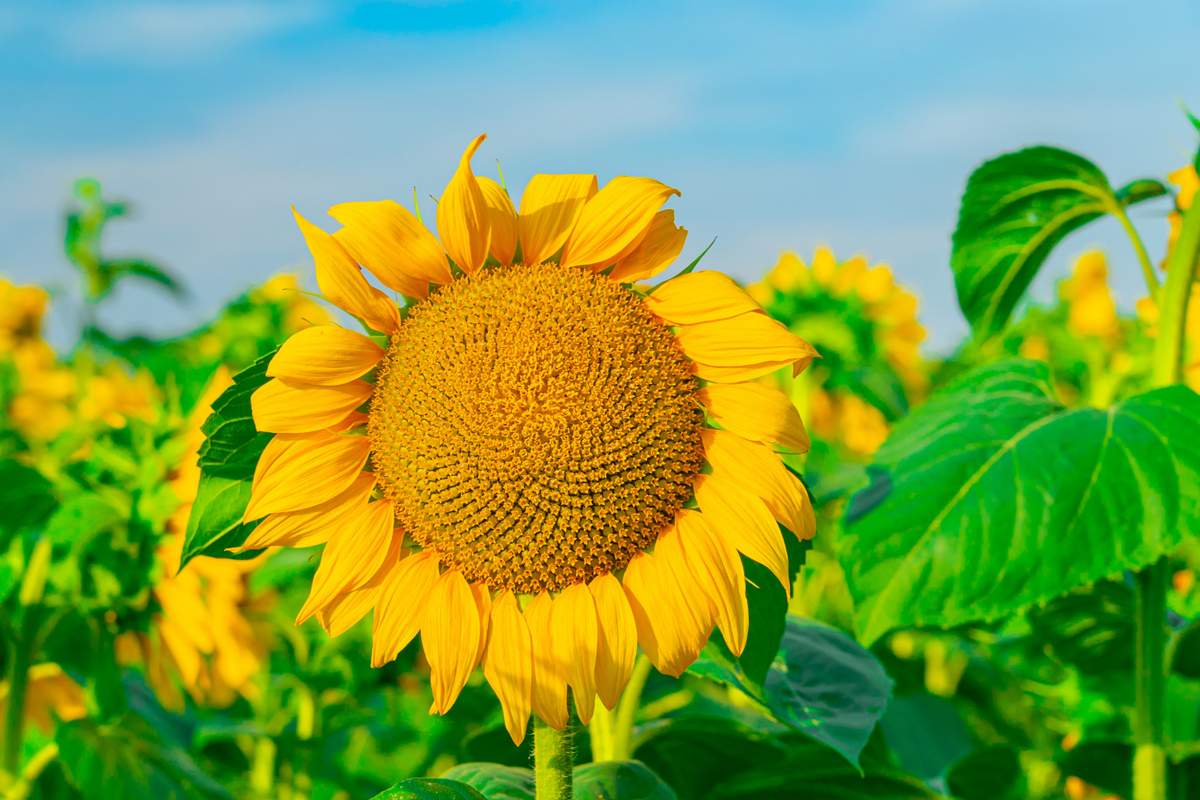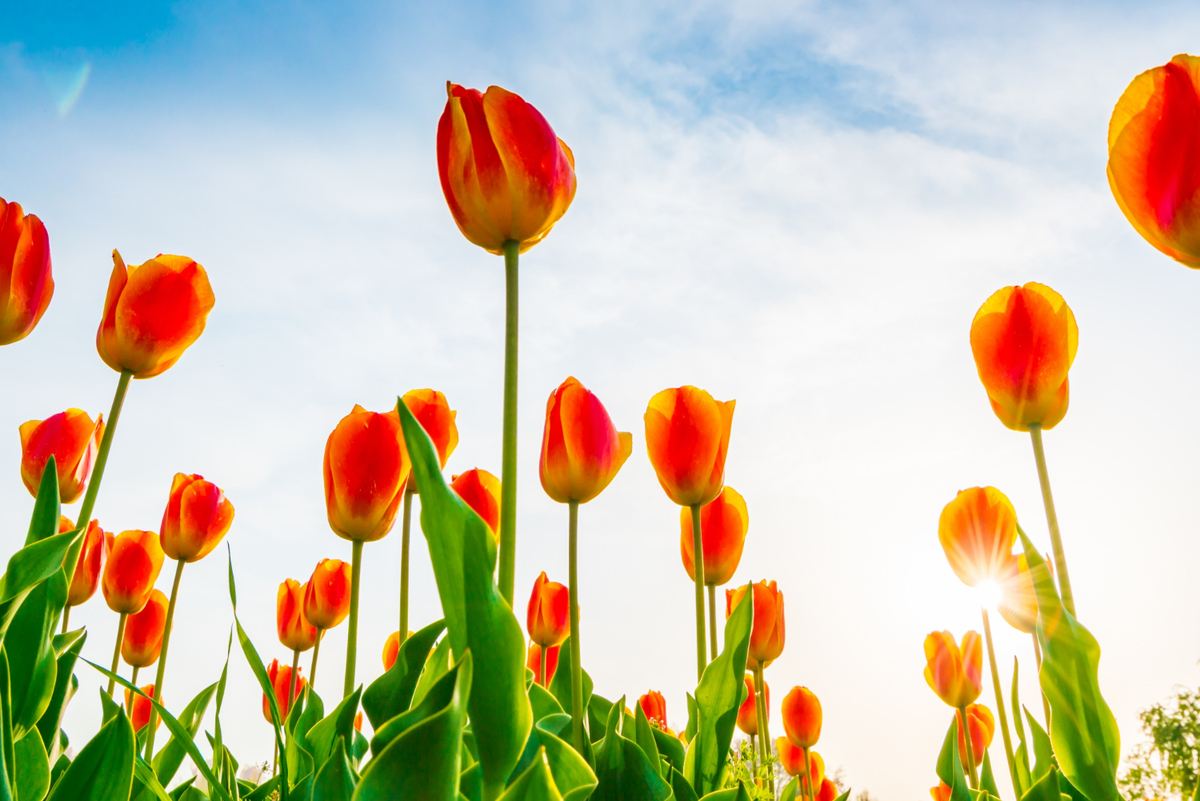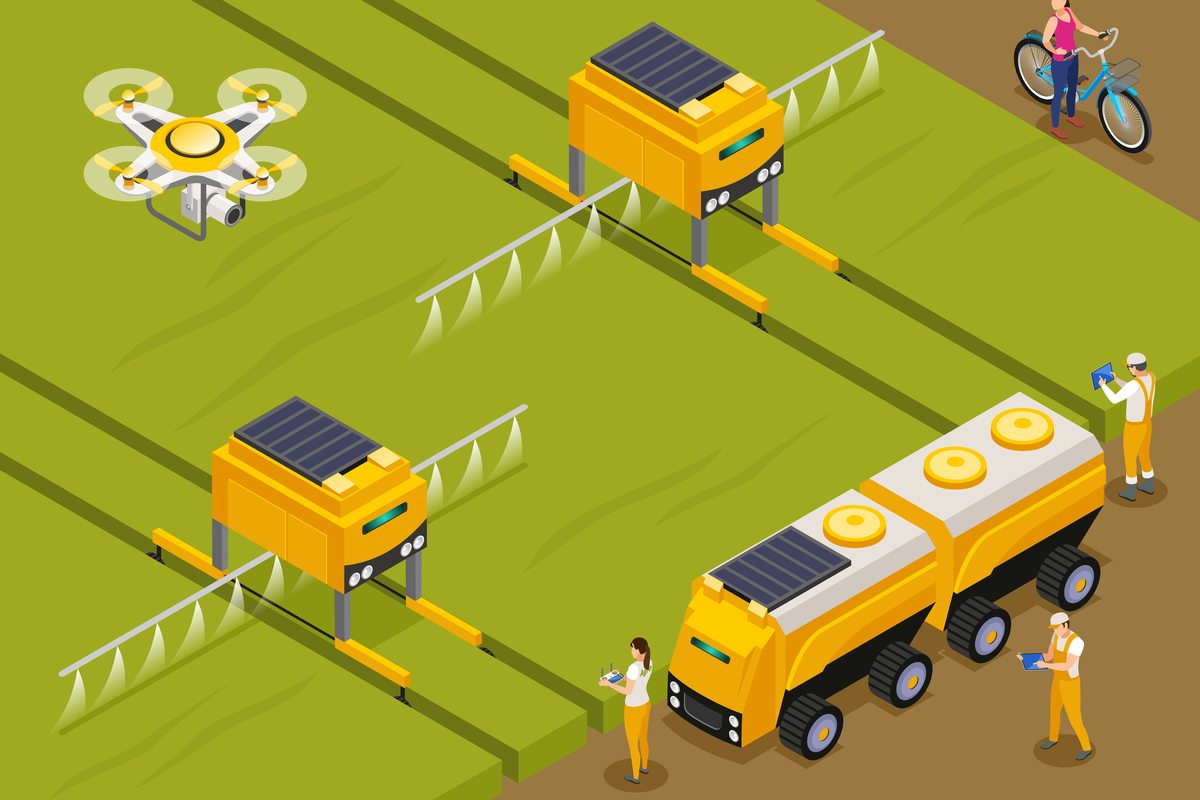Sunflowers, scientifically known as Helianthus annuus, are iconic and vibrant flowering plants that belong to the Asteraceae family. Renowned for their tall stature, bright yellow petals encircling a dark center disk, and unique ability to follow the sun’s path (referred to as heliotropism). Sunflower species come in a range of colors, such as traditional yellow, orange, red, and even dual-colored varieties. Sunflowers carry cultural importance on a global scale. They are associated with positivity, happiness, and longevity. Across various cultures, sunflowers symbolize faithfulness, admiration, and a deep affinity with the sun, representing warmth and positive vibes.
Sunflowers are not only grown for their aesthetic appeal but are also commercially cultivated for their seeds, rich in oil. Sunflower oil is a favored cooking oil due to its subtle taste and ability to withstand high temperatures. Furthermore, sunflower seeds are consumed as healthy snacks and are commonly incorporated into salads, cereals, and baked items. Sunflowers are versatile plants that thrive in different environmental conditions, thriving best in sunny locations with well-drained soil. Whether cultivated for their economic significance, visual attractiveness, or symbolic importance, sunflowers remain a source of fascination for individuals across the globe.
It is feasible to cultivate sunflowers in pots or containers within the confines of your home rather than in a traditional garden setting. However, there are various factors to take into account when engaging in container gardening with sunflowers. In this article, you will get a complete step-by-step guide on growing sunflower seeds in pots.
Table of Contents
Step-by-Step Guide on Growing Sunflower Seeds in Pots

1. Selecting the Right Pot
When beginning the process of cultivating sunflower seeds in pots, it is crucial to select the appropriate container carefully. The size of the pot plays a significant role in determining the success of the sunflower’s growth within a limited space. It is recommended to opt for a spacious pot with a diameter of at least 12 inches to ensure sufficient space for the sunflower’s taproot to flourish. Moreover, the chosen pot should feature adequate drainage holes to prevent waterlogging, as sunflowers are sensitive to waterlogged soil.
2. Choosing Sunflower Varieties
Choosing the appropriate sunflower varieties is crucial when starting the process of growing sunflower seeds in pots. Opting for compact or smaller varieties is essential to ensure a suitable match within the limitations of a container garden. Dwarf sunflower types, like ‘Music Box’ or ‘Sundance Kid,’ are ideal for container cultivation, providing the opportunity to enjoy the iconic blooms.
3. Soil Preparation
Soil preparation is a crucial step when cultivating sunflower seeds in pots. To establish an ideal environment for the growth of sunflowers, it is important to begin with a potting mix that is both well-draining and nutrient-rich. A well-balanced mix, enriched with organic matter, provides the necessary foundation for these sun-loving plants. The addition of organic fertilizer can further enhance soil fertility and ensure a consistent supply of nutrients. Adequate soil preparation not only promotes strong root development but also stimulates microbial activity, thereby contributing to the overall well-being of sunflowers in a limited container space.
4. Planting Sunflower Seeds
Plant the sunflower seeds directly into the soil, ensuring they are placed at a depth of approximately 1 to 2 inches. It is important to follow the recommended spacing for the particular sunflower variety. Once the seeds are placed, cover them with soil and water thoroughly. This initial planting process is crucial as it establishes the groundwork for strong root development and promotes the healthy growth of sunflowers within a container environment.
5. Sunlight Requirements
Sunflowers are sun-loving plants that thrive in full sunlight. They require a minimum of 6-8 hours of direct sun exposure daily to grow and bloom optimally. When deciding on a suitable spot for your potted sunflowers, it is important to select an area that receives ample sunlight, preferably facing the south or west. Sufficient sunlight is essential for the process of photosynthesis, which allows plants to convert sunlight into energy and develop robust stems, leaves, and vibrant blossoms. Inadequate sunlight can impede their growth, resulting in stunted development and a reduced number of flowers.
6. Watering
Proper irrigation is a crucial factor in growing sunflower seeds in containers. While sunflowers are relatively drought-tolerant, it is important to provide them with regular and sufficient water, particularly in pots where the soil tends to dry out quickly. It is recommended to maintain the soil at a consistently moist level without overwatering. Watering should be done when the top layer of soil is dry to the touch. Plants in containers may need to be watered more frequently compared to those in conventional garden beds, therefore, it is advisable to monitor the soil moisture levels regularly.
7. Supporting the Plants
Certain varieties of sunflowers, particularly the taller ones, may require additional support as they mature, despite their reputation for having strong stems. The weight of the blossoms can cause the sunflowers to bend or break. To avoid this, it is recommended to provide support during the early stages of growth. Placing sturdy stakes or implementing a trellis system in the pot can offer a dependable structure for the sunflowers to lean on as they strive to reach the sun.
8. Fertilizing
Sunflowers, although not requiring excessive nutrients, necessitate the provision of appropriate nourishment to ensure their vigorous development and vibrant blossoms. Opt for a well-balanced, versatile fertilizer that is suitable for container gardening, and follow the suggested application rates mentioned on the packaging. It is advisable to apply the fertilizer during the growing season, usually in the early stages of spring when the sunflowers are actively establishing their roots. It is important to note that an excessive amount of fertilizer can result in an overgrowth of foliage, thereby compromising the production of flowers. Hence, it is crucial to strictly follow the recommended guidelines to achieve optimal results.
9. Deadheading
Deadheading is an essential practice to improve the lifespan and visual appeal of the container garden. Deadheading involves the removal of spent or faded flowers from the sunflower plant, redirecting the plant’s energy towards producing new blooms. Regular deadheading not only promotes a continuous and abundant display of vibrant flowers but also prevents the formation of seeds, allowing the plant to prioritize flowering over seed development.
10. Harvesting Seeds
To harvest sunflower seeds, it is advisable to wait until the back of the flower head turns yellow and the seeds become plump. It is then necessary to remove the entire flower head from the stem, ensuring that a portion of the stem remains intact. The harvested sunflower heads should be hung upside down in a well-ventilated area indoors, allowing them to dry and cure further. Once completely dry, the seeds can be gently rubbed or shaken off the flower head. These harvested seeds can be stored for snacking, utilized in cooking, or even saved for the next planting season, thereby ensuring a continuous cycle of sunflower cultivation within the limited space of pots.
FAQs
What is the best month to plant sunflowers?
Sunflowers should be planted based on the climate and local growing conditions. Typically, sunflowers are warm-season plants that do well when planted in late spring or early summer. The most suitable time to plant sunflowers is usually between April and June, as this allows them to benefit from the warm temperatures and extended daylight hours, promoting their best growth.
How long do sunflower seeds take to grow?
The growth of sunflower seeds is influenced by a range of factors, including the specific sunflower varieties and environmental conditions. From germination to the full maturation of the seeds, this entire progression typically takes a duration of approximately 100 to 120 days.
How many sunflower seeds do you get from one plant?
One sunflower plant can produce a varying number of seeds depending on factors like the sunflower type, growth environment, and the plant’s health. Under ideal conditions with sufficient sunlight, good soil drainage, and appropriate maintenance, a healthy sunflower plant has the potential to yield between 500 to more than 1,000 seeds per flower head.











Mygreat learning This was beautiful Admin. Thank you for your reflections.